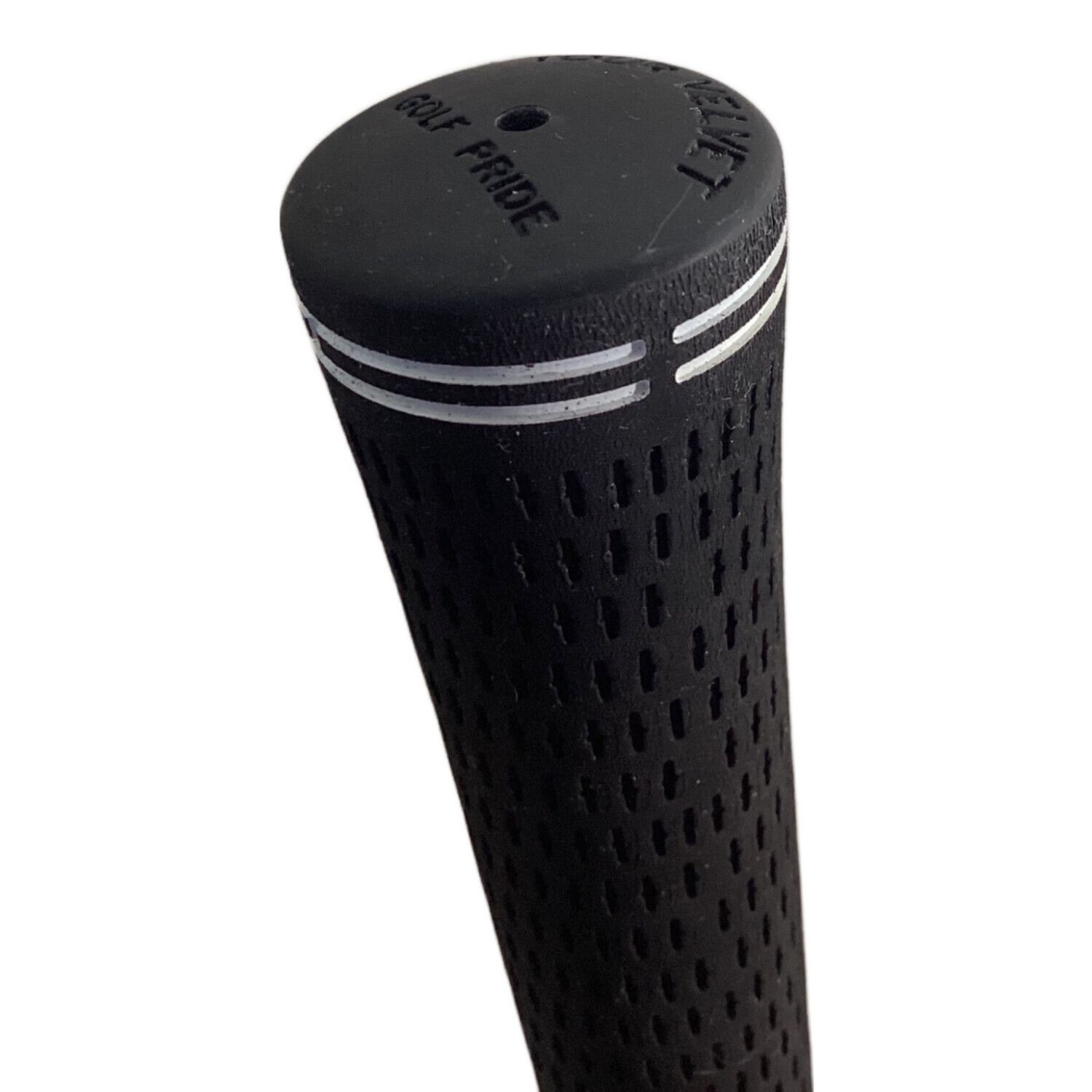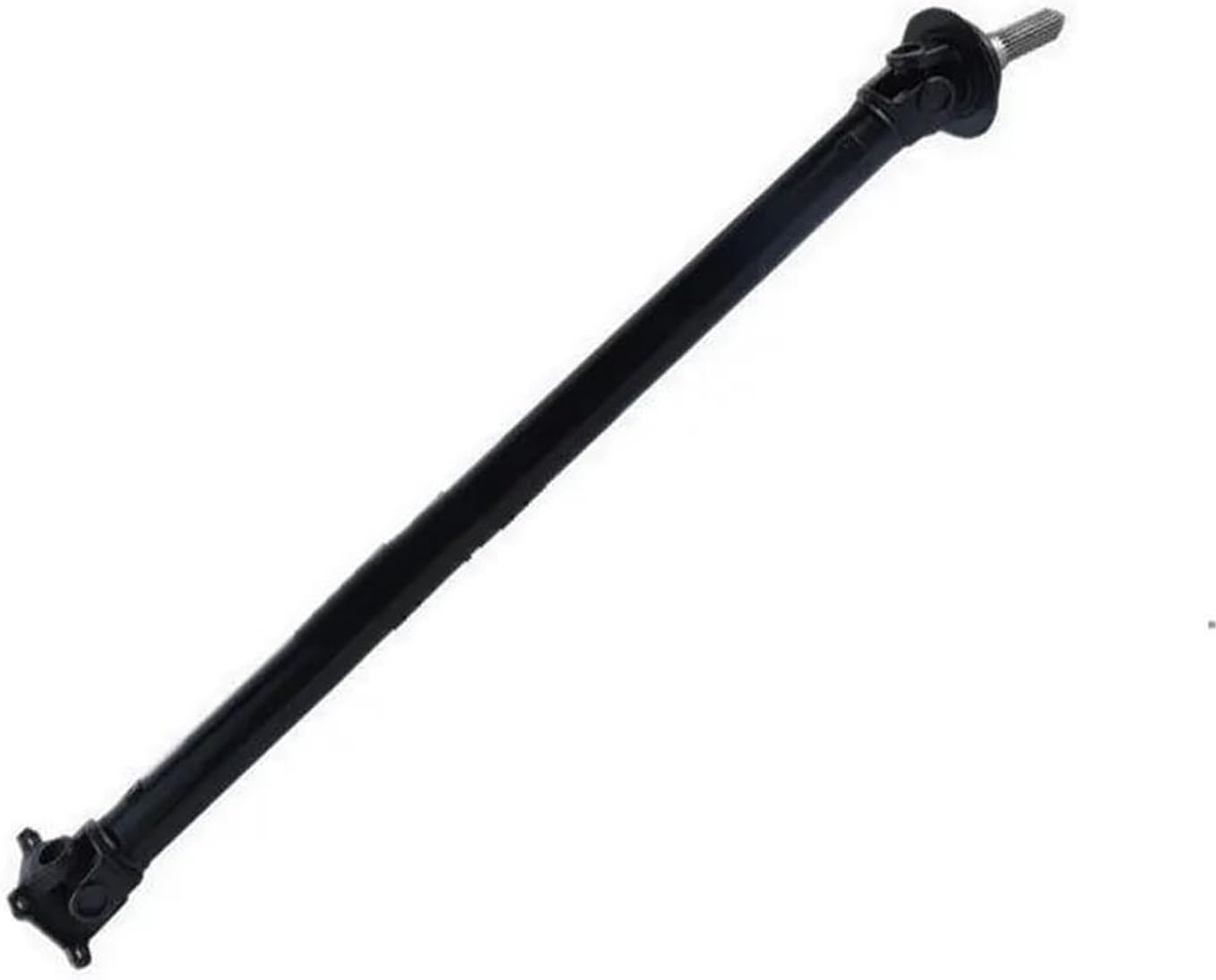
マイストア
変更
お店で受け取る
(送料無料)
配送する
納期目安:
01月28日頃のお届け予定です。
決済方法が、クレジット、代金引換の場合に限ります。その他の決済方法の場合はこちらをご確認ください。
※土・日・祝日の注文の場合や在庫状況によって、商品のお届けにお時間をいただく場合がございます。
フジクラ Speeder Speeder NX BLACK ドライバー用_スリーブ付 Speeder NX BLACK 50 【キャロウェイゴルフ用】の詳細情報
シャフト
Speeder
NX
BLACK
50
ロフト
-
フレックス
X
左右
-
長さ
44.25
重量(g)
-
バランス
-
程度
C
ヘッドカバー
-
付属品
無
グリップ
-
グリップ程度
良
在庫店舗
西葛西店
備考
リシャフト。対応ヘッド:PARADYMシリーズ/MAVRIK/EPIC
/ROGUE/XR/GBB/BIG
BERTHA
ALPHA。スリーブ純正外。ヘッド装着時長さ:プラス1インチ?1.5インチ。
出荷予定時期
通常2日後に出荷
商品管理コード
5002361390
商品の程度について
A
使用感の無い状態(未使用品含む)
B
傷の少ない状態
C
表面の擦れや傷がある状態
D
目立つ傷や擦れがある状態/レンズに小傷あり(距離測定器)
E
全体的に傷が多い状態/レンズに傷あり(距離測定器)
注意事項
・こちらの商品は、注文手続き完了後の内容変更・キャンセル・交換・返品はお受けできません。あらかじめご了承ください。
・こちらの商品はゴルフガレージ店頭でも販売しておりますので、タイミングによっては店頭完売によりご用意できない場合もございます。
・重量・バランスについては弊社実測値です。
・長さは、メーカーによって測定方法が異なるため、シャフト改造の痕跡が認められない場合、実測値が近似値であればメーカー公表値を表示しています。
※アイアンセットの場合は、主に5番アイアンの長さを表示しています。
購入後の流れについて
STEP
1.
購入商品決定
商品説明や注意事項を良く読んだ上で、「購入手続きへ」ボタンを押してください。
↓
STEP
2.
購入手続き
「購入内容の確認」画面で必要情報をご入力ください。
お手続き完了後にご注文受付のメールを送信いたします。
↓
STEP
3.
出荷
ご購入手続き完了から
2日後
を目安に商品を出荷いたします。
出荷後は出荷完了のメールを送信いたします。
※出荷日を早めることは出来ません
お問い合わせ窓口営業時間
営業日
平日
10:00-17:00
休業日
土日祝・年末年始
ご購入に関する注意事項
※ご購入手続き前に必ずご確認ください※
お問い合わせについて
■当ストアの商品購入をご検討いただく場合、
まずは
「ご利用ガイド」
および
「よくある質問」
をあらかじめご確認ください。
そのうえで、お問い合わせがある場合は以下のリンクよりお問い合わせをお願いします。
・
購入前
のお問い合わせは
こちら
・
購入後
のお問い合わせは
マイオク(落札分)
から取引メッセージにてご連絡ください。
※質問ボタン、連絡掲示板でお問い合わせされた場合、当ストアでは対応いたしておりませんので、購入前、購入後は必ず上記の方法でお問い合わせをお願いいたします。
※「短い間ですがよろしくお願いします。」など、お問い合わせ以外の購入後の挨拶には返信いたしませんのであらかじめご了承ください。
■営業時間外はお問い合わせ回答を行っておりません。
また、定休日も一部回答は行っておりますが、
通常よりも回答までにお時間を頂戴する場合がございますのであらかじめご了承ください。
価格交渉について
■
当ストアは価格交渉を一切行っておりません。
ご質問、メール等でご要望いただいた場合もご対応いたしかねますのでご了承ください。
スペックについて
■ロフト角はカタログ値となります。
■総重量・バランスは実測値となります。
■長さは、メーカーによって測定方法が異なるため、シャフト改造の痕跡が
認められない場合、実測値が近似値であればメーカー公表値を表示しています。
■計測可能な数値は長さ・総重量・バランスのみです。ロフトやライ角等は計測できませんのでご了承ください。
■アイアンセットの詳細数値は5番の計測値を掲載しております。
※5番が無い場合は一番若い番手、レディースは7番の数値となります。
■計測器によって数値が変動する為、購入後の計測値に差異がある場合がございます。
グリップについて
■グリップは消耗品の為、未使用品以外の商品は、グリップの破損や汚れ、捻じれ等が
生じている場合も
返品、交換の対象とはなりません。
ご購入後はお客様ご自身での交換を推奨いたしますので予めご了承ください。
※グリップ状態が気になる場合はご購入前にお問い合わせ窓口からお問い合わせください。
未使用品について
■当ストアの中古商品は買取品を商品化のうえで出品しておりますので、
未使用品も中古扱いとなります。
なお、店頭でも同時に販売しておりますので、展示後の商品も含まれます。
当ストアからの連絡について
■商品をご購入いただいた場合、当ストアからのご案内のメールが送信されます。
案内が届かない場合は迷惑メールとして受信拒否されていることが考えられますので
登録メールアドレスの設定確認をお願いいたします。
弊社からの送信メールアドレスは【[email protected]】となっております。
※ヤフオク!から送信されるメールと当ストアから送信されるメールは異なります。
<キャリアメールの場合は以下の各社HPより設定方法をご確認ください>
・
NTT
docomo
・
au
・
SoftBank
返品・キャンセルについて
■「間違えて購入した」、「イメージと違った」、「不要になった」等、お客様の
ご都合による返品はお受けできません。
商品の管理には万全を期しておりますが、万が一、商品違いや破損などの
不良がございましたら、お手数ではございますが、商品到着後8日以内に
マイオク(落札分)
から取引メッセージにてご連絡ください。
また、商品到着8日以降は返品をお受けできませんので、商品がお手元に
到着しましたら速やかに商品確認をお願いいたします。
【返品についてのご注意】
・ご連絡なく返送された場合は、商品をお届けしたご住所へお戻しさせていただきます。
・グリップ交換やシャフト交換などの改造を行うと商品不良が疑われる場合でも
返品対象外となりますのでご注意ください。
・購入商品の補修代金(グリップ交換工賃等)は負担できません。
・商品の到着確認後のご返金処理開始となります。
銀行振り込みで返金の場合は、口座着金までに10日前後お時間を頂戴いたしますので
あらかじめご承知ください。
■システムによる返金可能期間について
ヤフオクの仕様上、クレジットカード、PayPay残高払いでお支払いの場合、注文日から14日経過後はシステムからの返金手続きができません。
注文日から14日経過後は銀行振込返金でのご案内となりますのであらかじめご了承ください。
※返送品の到着から、返品手続きが完了するまでお時間を頂戴しますので返品手続き中に14日を経過した場合も銀行振込返金になります。
■ご購入手続き完了後のキャンセルは承っておりません。
よくご検討いただいたうえで、ご購入をお願いいたします。
消費税について
■購入価格に対し別途消費税がかかります。(1円未満切り捨て)
購入商品について
■GDOサイトまたはゴルフガレージ店頭でも販売しておりますので、
ご購入タイミングによっては完売により商品をご用意できない場合もございます。
※在庫確認は平日の営業日のみ行っておりますので、定休日にご購入いただいた場合は、
完売のご連絡が翌営業日となりますのであらかじめご了承ください。
※※完売の場合はご注文をキャンセルさせていただき、ご返金いたします。
お支払方法について
■以下のお支払方法がご利用いただけます。
・クレジットカード
・PayPay残高払い
・代金引換
※Yahoo!かんたん決済はご利用いただけません。
※GDOポイントはご利用いただけません。
送料について
■全国一律送料無料
複数点購入いただいた場合
■同梱出荷はお受けできません。
※複数ご購入いただいた場合は、商品ごとに個別出荷となります。
※お問い合わせいただいてもご対応できませんのであらかじめご了承ください。
配送について
■配送会社は佐川急便です。
※配送業者の指定はできません。
※代引き不可地域・時間指定不可地域へのお届けはヤマト運輸になります。
※配送業者および配送伝票番号は当ストアからの出荷完了メールにてご確認ください。
※営業所止めはお受けできません。「出荷完了メール」をお受け取りになられましたら、本文に記載されている配送業者へ直接配送先変更をご依頼ください。
配送日時指定について
■購入内容の確認でお届け先情報を入力する際に配送日時の指定が可能です。
出荷について
ご購入手続き完了後、2日後を目安に商品を出荷いたします。
保証書について
■中古商品は未使用品を含め保証対象外となります。
※未使用品を含め商品には保証書の添付はございませんのであらかじめご了承ください。
領収書について
■領収証はお客様ご自身でダウンロード・印刷出来るWEB発行システムとなっています。
商品出荷完了後のお知らせメールにてWEB発行用の専用URLをご案内いたしますのでそこから発行してください。
※1回のみ発行可能です。
<代金引換>
代金お支払い時のお客様控えが正式な領収証となり、再発行は当店では出来ませんので運送会社へご依頼ください。
評価について
■当ストアでは購入者様への評価は実施しておりません。
評価のご要望をいただいてもご対応いたしておりませんので、あらかじめご了承ください。
Speeder
NX
BLACK
50
ロフト
-
フレックス
X
左右
-
長さ
44.25
重量(g)
-
バランス
-
程度
C
ヘッドカバー
-
付属品
無
グリップ
-
グリップ程度
良
在庫店舗
西葛西店
備考
リシャフト。対応ヘッド:PARADYMシリーズ/MAVRIK/EPIC
/ROGUE/XR/GBB/BIG
BERTHA
ALPHA。スリーブ純正外。ヘッド装着時長さ:プラス1インチ?1.5インチ。
出荷予定時期
通常2日後に出荷
商品管理コード
5002361390
商品の程度について
A
使用感の無い状態(未使用品含む)
B
傷の少ない状態
C
表面の擦れや傷がある状態
D
目立つ傷や擦れがある状態/レンズに小傷あり(距離測定器)
E
全体的に傷が多い状態/レンズに傷あり(距離測定器)
注意事項
・こちらの商品は、注文手続き完了後の内容変更・キャンセル・交換・返品はお受けできません。あらかじめご了承ください。
・こちらの商品はゴルフガレージ店頭でも販売しておりますので、タイミングによっては店頭完売によりご用意できない場合もございます。
・重量・バランスについては弊社実測値です。
・長さは、メーカーによって測定方法が異なるため、シャフト改造の痕跡が認められない場合、実測値が近似値であればメーカー公表値を表示しています。
※アイアンセットの場合は、主に5番アイアンの長さを表示しています。
購入後の流れについて
STEP
1.
購入商品決定
商品説明や注意事項を良く読んだ上で、「購入手続きへ」ボタンを押してください。
↓
STEP
2.
購入手続き
「購入内容の確認」画面で必要情報をご入力ください。
お手続き完了後にご注文受付のメールを送信いたします。
↓
STEP
3.
出荷
ご購入手続き完了から
2日後
を目安に商品を出荷いたします。
出荷後は出荷完了のメールを送信いたします。
※出荷日を早めることは出来ません
お問い合わせ窓口営業時間
営業日
平日
10:00-17:00
休業日
土日祝・年末年始
ご購入に関する注意事項
※ご購入手続き前に必ずご確認ください※
お問い合わせについて
■当ストアの商品購入をご検討いただく場合、
まずは
「ご利用ガイド」
および
「よくある質問」
をあらかじめご確認ください。
そのうえで、お問い合わせがある場合は以下のリンクよりお問い合わせをお願いします。
・
購入前
のお問い合わせは
こちら
・
購入後
のお問い合わせは
マイオク(落札分)
から取引メッセージにてご連絡ください。
※質問ボタン、連絡掲示板でお問い合わせされた場合、当ストアでは対応いたしておりませんので、購入前、購入後は必ず上記の方法でお問い合わせをお願いいたします。
※「短い間ですがよろしくお願いします。」など、お問い合わせ以外の購入後の挨拶には返信いたしませんのであらかじめご了承ください。
■営業時間外はお問い合わせ回答を行っておりません。
また、定休日も一部回答は行っておりますが、
通常よりも回答までにお時間を頂戴する場合がございますのであらかじめご了承ください。
価格交渉について
■
当ストアは価格交渉を一切行っておりません。
ご質問、メール等でご要望いただいた場合もご対応いたしかねますのでご了承ください。
スペックについて
■ロフト角はカタログ値となります。
■総重量・バランスは実測値となります。
■長さは、メーカーによって測定方法が異なるため、シャフト改造の痕跡が
認められない場合、実測値が近似値であればメーカー公表値を表示しています。
■計測可能な数値は長さ・総重量・バランスのみです。ロフトやライ角等は計測できませんのでご了承ください。
■アイアンセットの詳細数値は5番の計測値を掲載しております。
※5番が無い場合は一番若い番手、レディースは7番の数値となります。
■計測器によって数値が変動する為、購入後の計測値に差異がある場合がございます。
グリップについて
■グリップは消耗品の為、未使用品以外の商品は、グリップの破損や汚れ、捻じれ等が
生じている場合も
返品、交換の対象とはなりません。
ご購入後はお客様ご自身での交換を推奨いたしますので予めご了承ください。
※グリップ状態が気になる場合はご購入前にお問い合わせ窓口からお問い合わせください。
未使用品について
■当ストアの中古商品は買取品を商品化のうえで出品しておりますので、
未使用品も中古扱いとなります。
なお、店頭でも同時に販売しておりますので、展示後の商品も含まれます。
当ストアからの連絡について
■商品をご購入いただいた場合、当ストアからのご案内のメールが送信されます。
案内が届かない場合は迷惑メールとして受信拒否されていることが考えられますので
登録メールアドレスの設定確認をお願いいたします。
弊社からの送信メールアドレスは【[email protected]】となっております。
※ヤフオク!から送信されるメールと当ストアから送信されるメールは異なります。
<キャリアメールの場合は以下の各社HPより設定方法をご確認ください>
・
NTT
docomo
・
au
・
SoftBank
返品・キャンセルについて
■「間違えて購入した」、「イメージと違った」、「不要になった」等、お客様の
ご都合による返品はお受けできません。
商品の管理には万全を期しておりますが、万が一、商品違いや破損などの
不良がございましたら、お手数ではございますが、商品到着後8日以内に
マイオク(落札分)
から取引メッセージにてご連絡ください。
また、商品到着8日以降は返品をお受けできませんので、商品がお手元に
到着しましたら速やかに商品確認をお願いいたします。
【返品についてのご注意】
・ご連絡なく返送された場合は、商品をお届けしたご住所へお戻しさせていただきます。
・グリップ交換やシャフト交換などの改造を行うと商品不良が疑われる場合でも
返品対象外となりますのでご注意ください。
・購入商品の補修代金(グリップ交換工賃等)は負担できません。
・商品の到着確認後のご返金処理開始となります。
銀行振り込みで返金の場合は、口座着金までに10日前後お時間を頂戴いたしますので
あらかじめご承知ください。
■システムによる返金可能期間について
ヤフオクの仕様上、クレジットカード、PayPay残高払いでお支払いの場合、注文日から14日経過後はシステムからの返金手続きができません。
注文日から14日経過後は銀行振込返金でのご案内となりますのであらかじめご了承ください。
※返送品の到着から、返品手続きが完了するまでお時間を頂戴しますので返品手続き中に14日を経過した場合も銀行振込返金になります。
■ご購入手続き完了後のキャンセルは承っておりません。
よくご検討いただいたうえで、ご購入をお願いいたします。
消費税について
■購入価格に対し別途消費税がかかります。(1円未満切り捨て)
購入商品について
■GDOサイトまたはゴルフガレージ店頭でも販売しておりますので、
ご購入タイミングによっては完売により商品をご用意できない場合もございます。
※在庫確認は平日の営業日のみ行っておりますので、定休日にご購入いただいた場合は、
完売のご連絡が翌営業日となりますのであらかじめご了承ください。
※※完売の場合はご注文をキャンセルさせていただき、ご返金いたします。
お支払方法について
■以下のお支払方法がご利用いただけます。
・クレジットカード
・PayPay残高払い
・代金引換
※Yahoo!かんたん決済はご利用いただけません。
※GDOポイントはご利用いただけません。
送料について
■全国一律送料無料
複数点購入いただいた場合
■同梱出荷はお受けできません。
※複数ご購入いただいた場合は、商品ごとに個別出荷となります。
※お問い合わせいただいてもご対応できませんのであらかじめご了承ください。
配送について
■配送会社は佐川急便です。
※配送業者の指定はできません。
※代引き不可地域・時間指定不可地域へのお届けはヤマト運輸になります。
※配送業者および配送伝票番号は当ストアからの出荷完了メールにてご確認ください。
※営業所止めはお受けできません。「出荷完了メール」をお受け取りになられましたら、本文に記載されている配送業者へ直接配送先変更をご依頼ください。
配送日時指定について
■購入内容の確認でお届け先情報を入力する際に配送日時の指定が可能です。
出荷について
ご購入手続き完了後、2日後を目安に商品を出荷いたします。
保証書について
■中古商品は未使用品を含め保証対象外となります。
※未使用品を含め商品には保証書の添付はございませんのであらかじめご了承ください。
領収書について
■領収証はお客様ご自身でダウンロード・印刷出来るWEB発行システムとなっています。
商品出荷完了後のお知らせメールにてWEB発行用の専用URLをご案内いたしますのでそこから発行してください。
※1回のみ発行可能です。
<代金引換>
代金お支払い時のお客様控えが正式な領収証となり、再発行は当店では出来ませんので運送会社へご依頼ください。
評価について
■当ストアでは購入者様への評価は実施しておりません。
評価のご要望をいただいてもご対応いたしておりませんので、あらかじめご了承ください。
ベストセラーランキングです
近くの売り場の商品
カスタマーレビュー
オススメ度 4.9点
現在、749件のレビューが投稿されています。
























